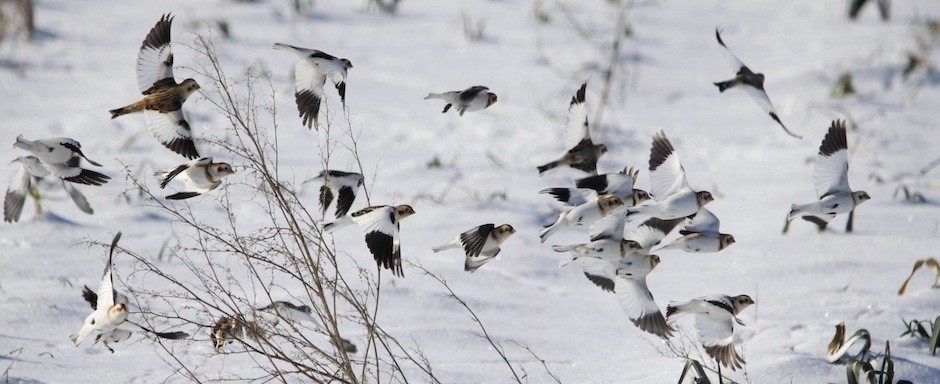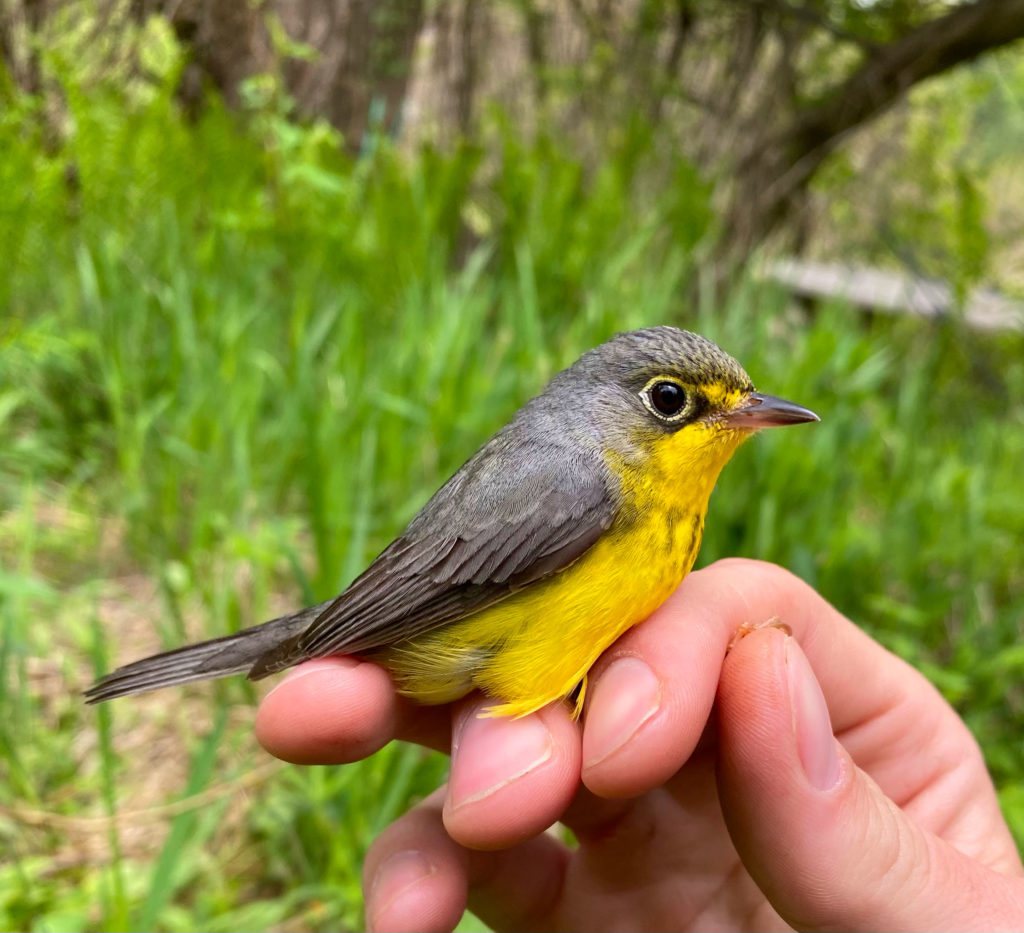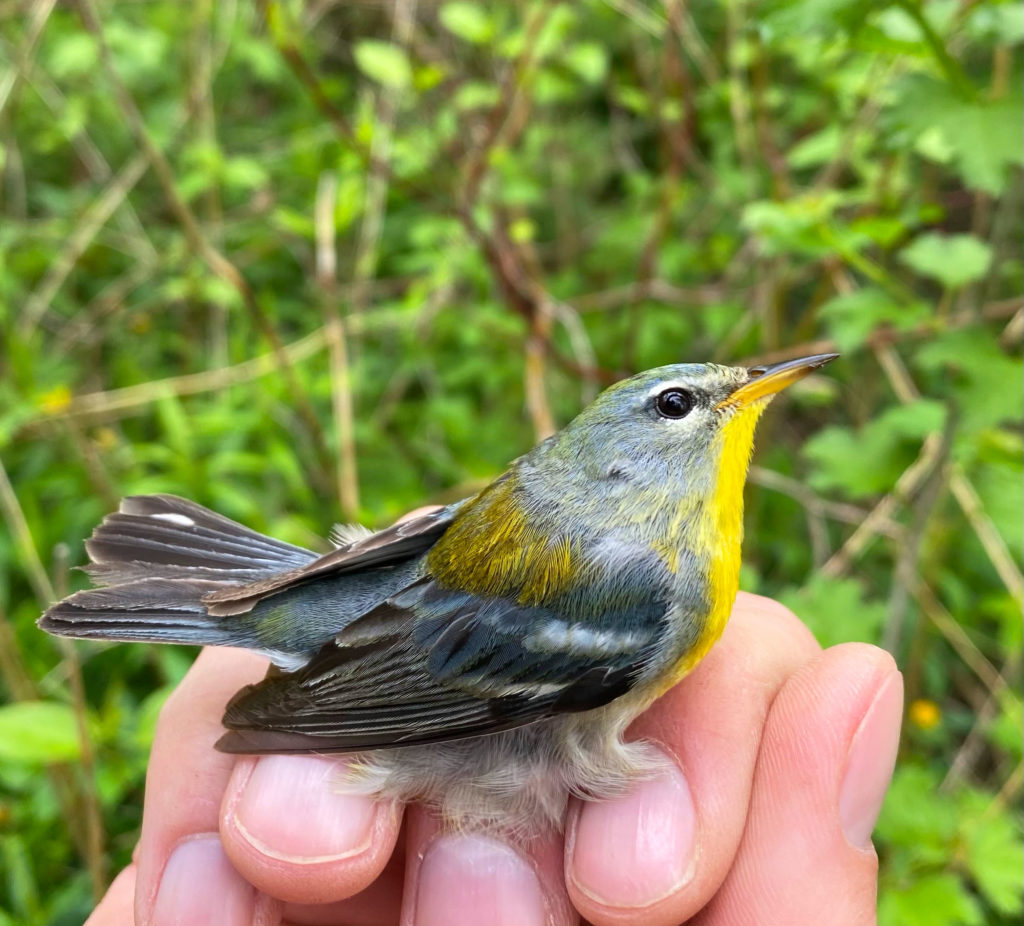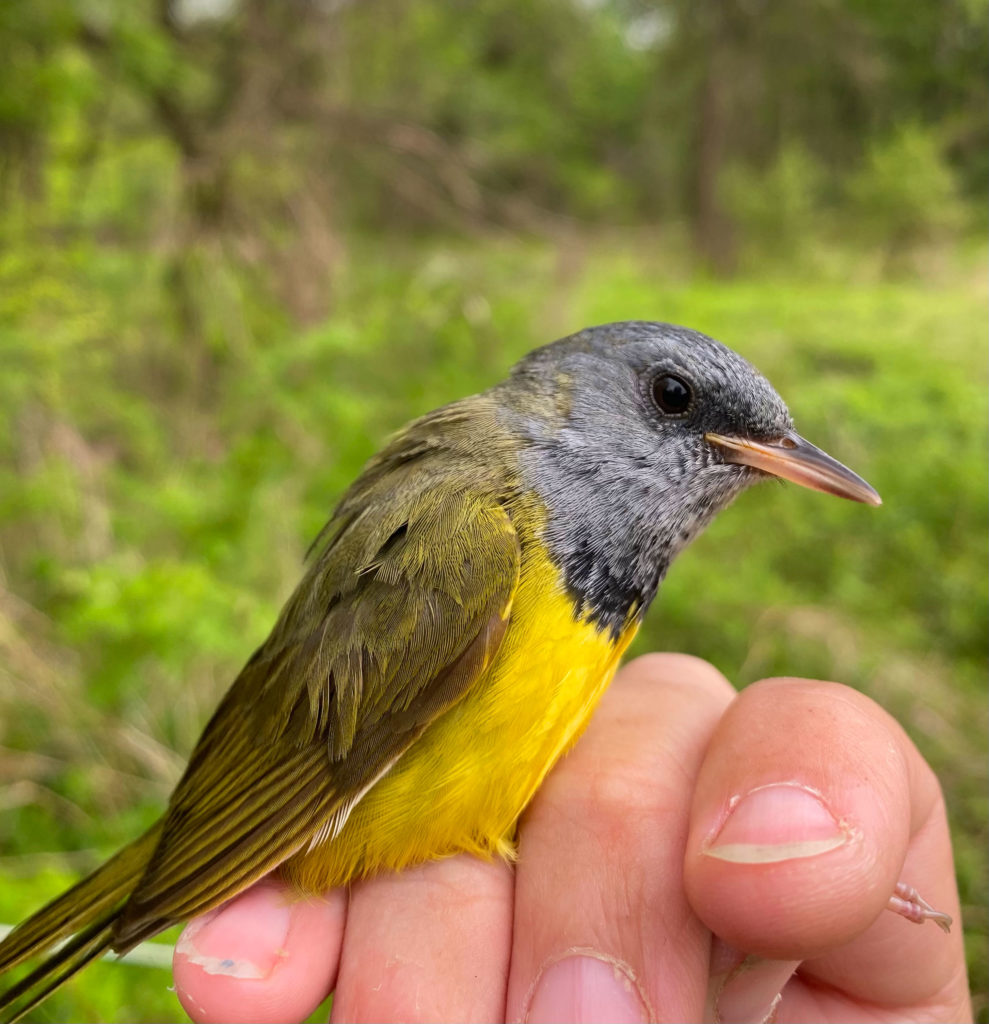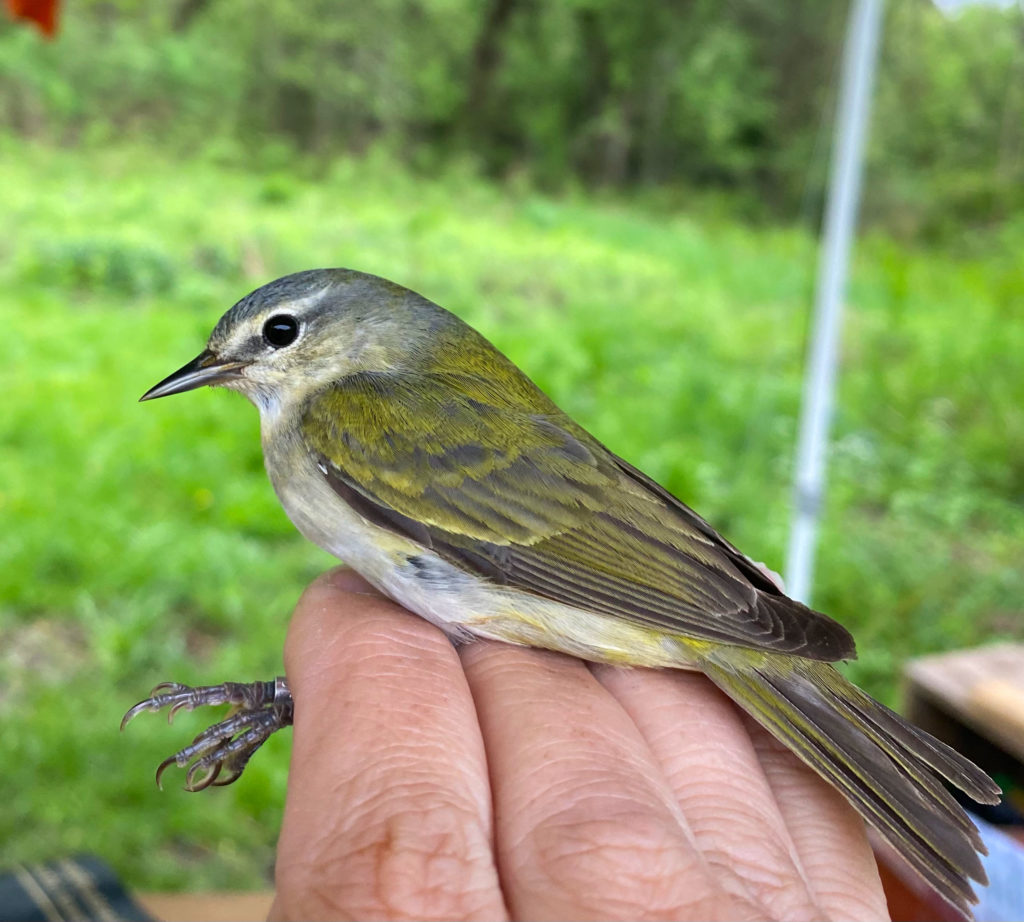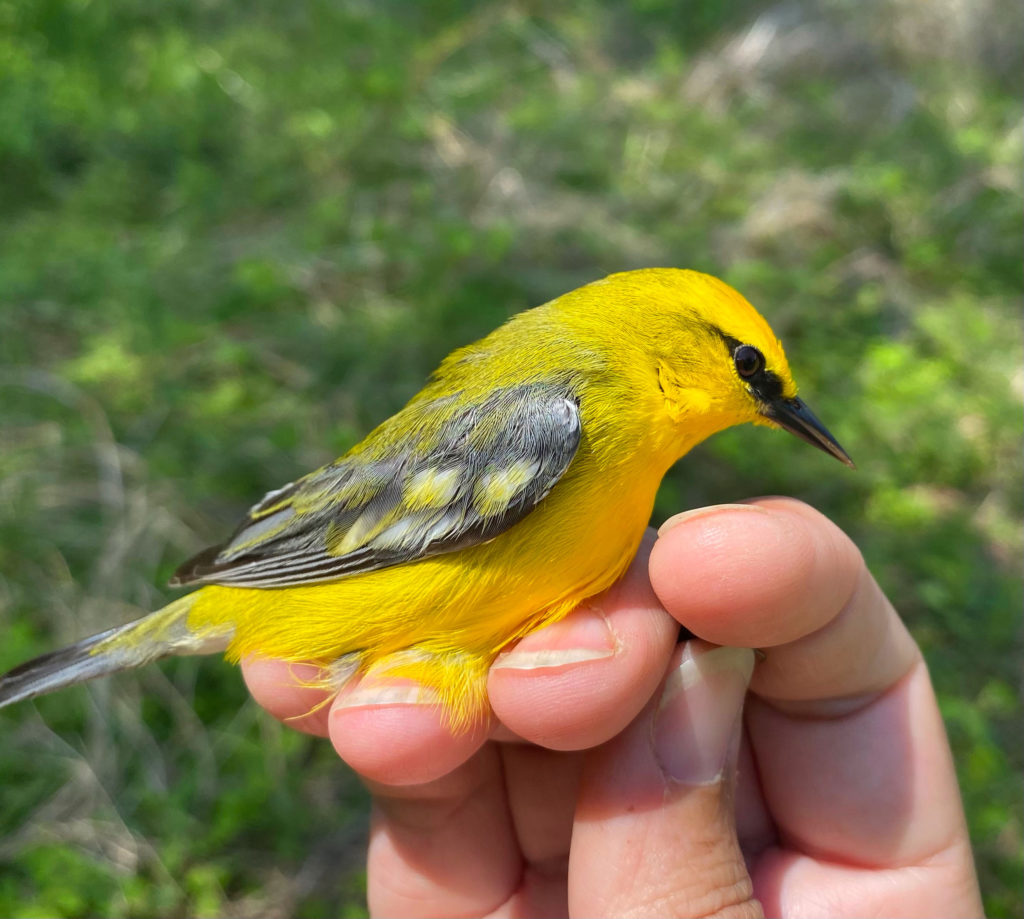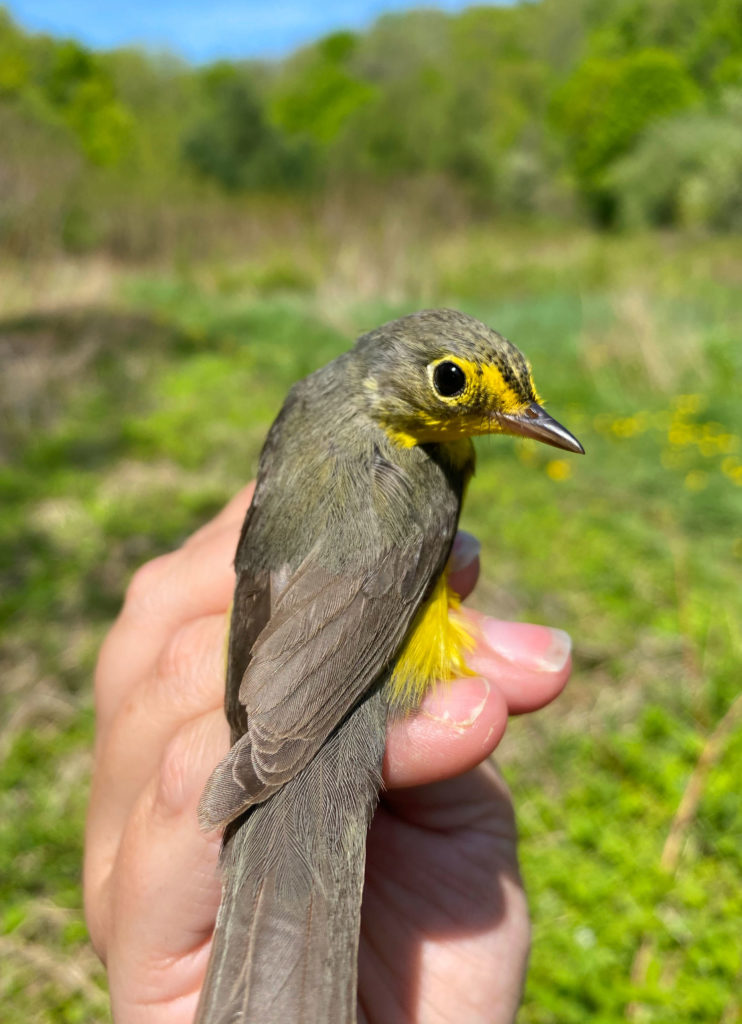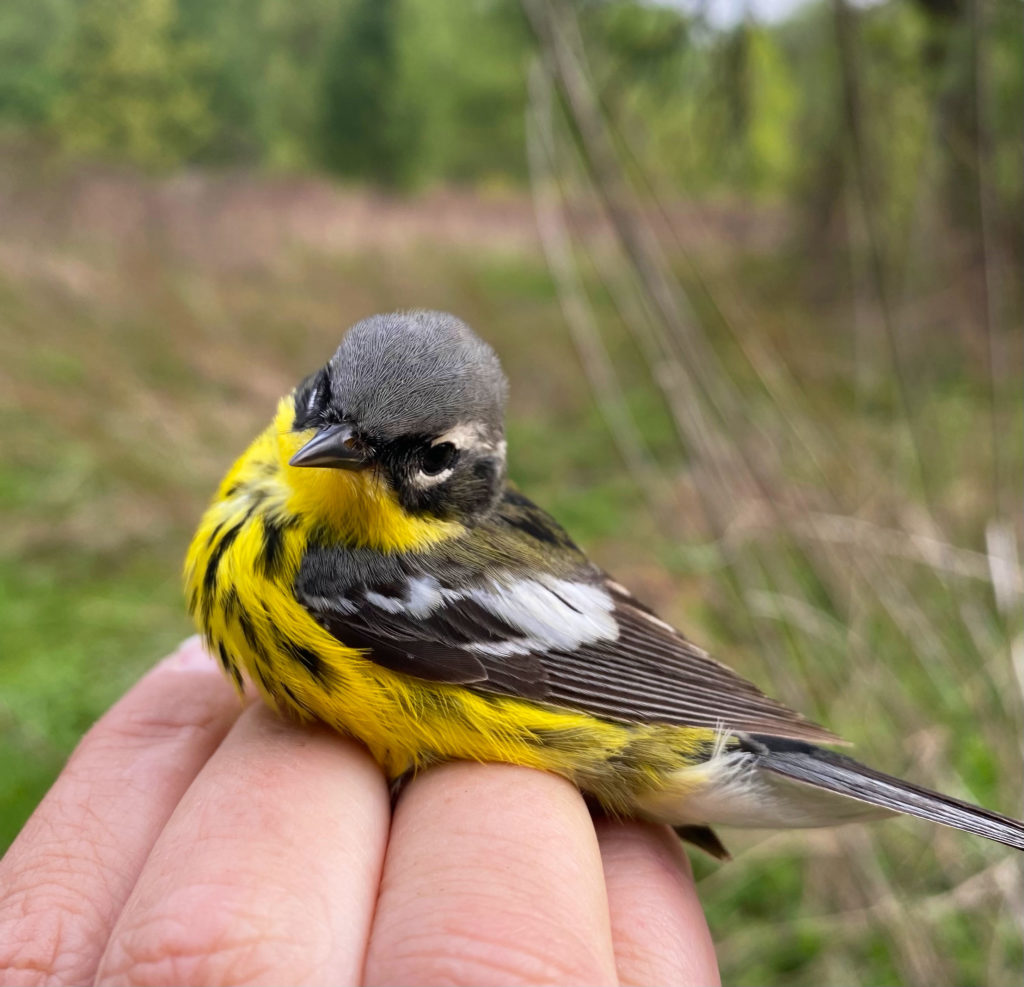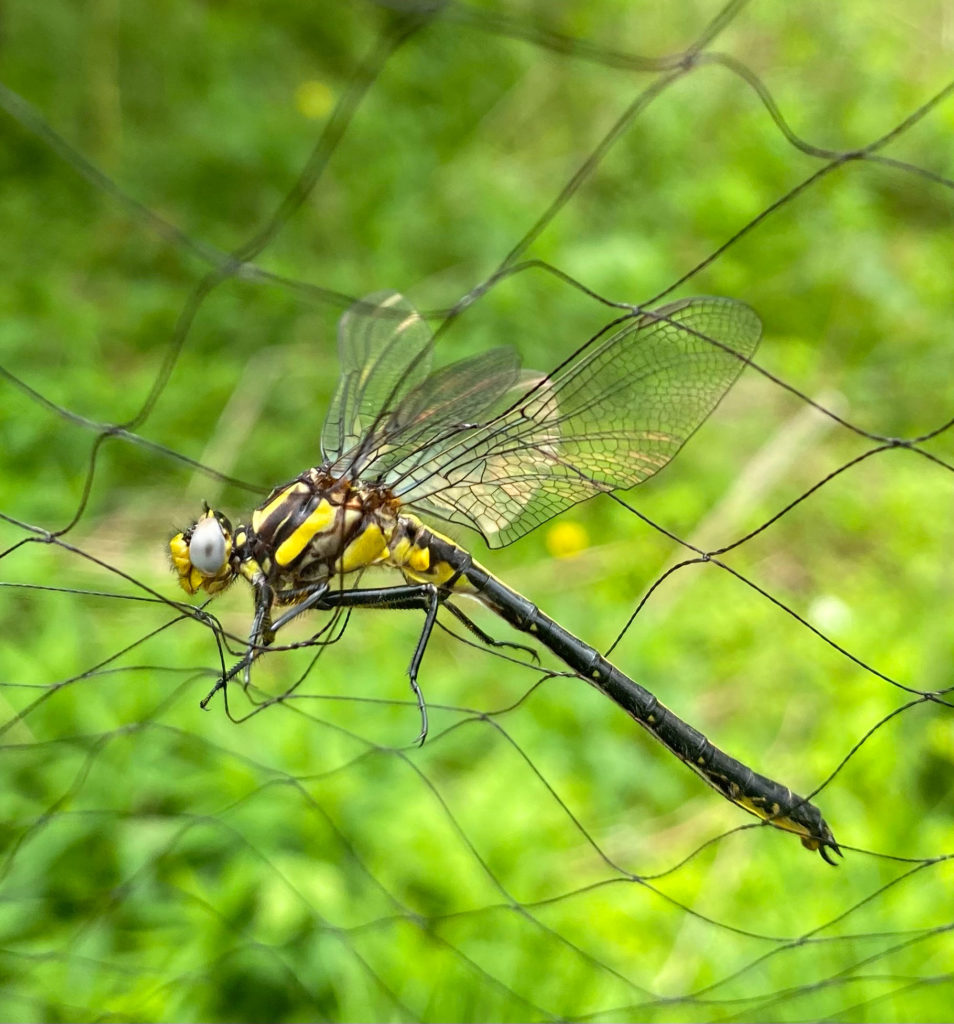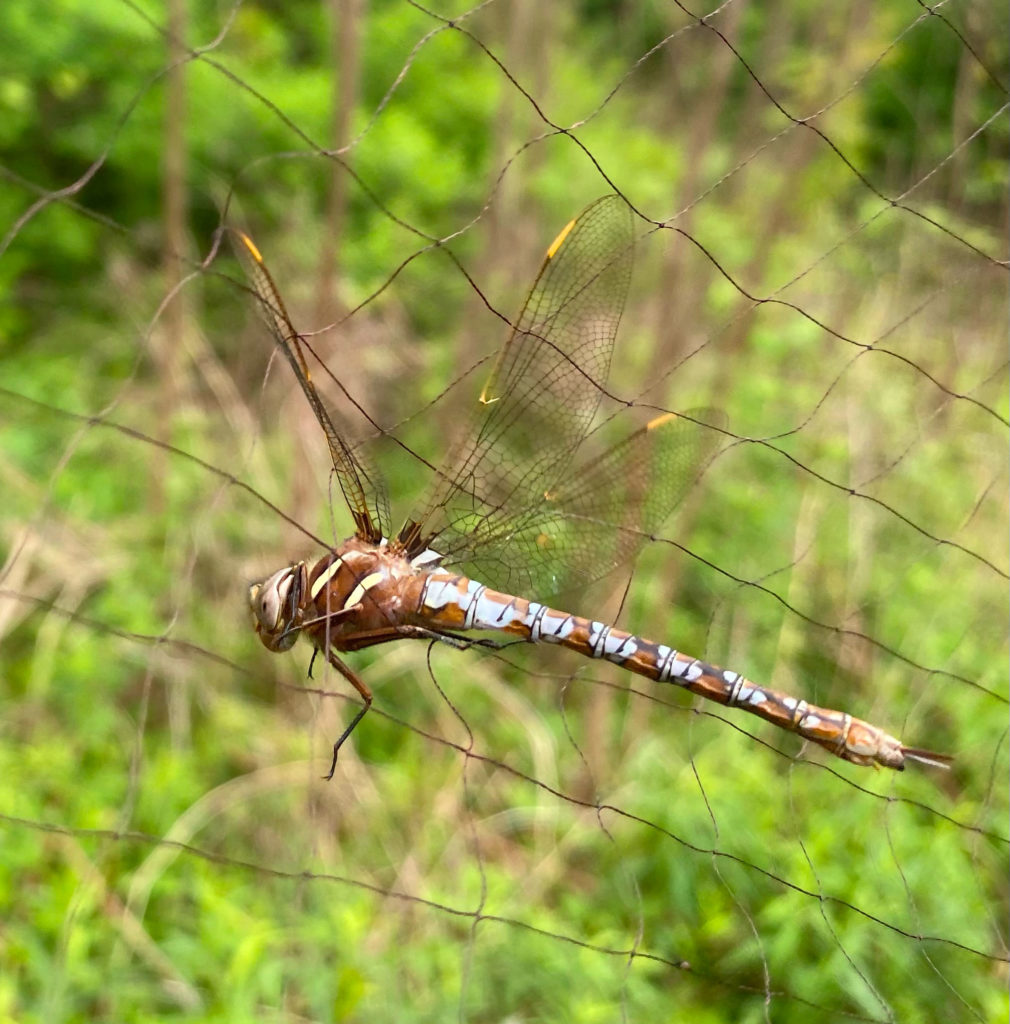~ Continued: Update for May 13-20 ~
May 19 – Lowville
This time of year, birding success can be quite dependent on the weather. You could say “happiness comes the way the wind blows”… I’m sure the author of that quote (Mikhail Lermontov) meant it in a different way, but I relate to that statement in regards to spring (or fall) birding. The night of May 18 was indeed another great night for migration, and we observed lots of migrants at the site in the morning. In addition to that, we caught a new species for the Lowville site – a Northern Parula!! The flowering trees near the aerial net are in bloom, so we have been successful in catching some of the birds visiting the flowers. The species you might see sipping nectar of course include orioles, but there are also some warbler species that you might typically think of as insectivores that will readily drink nectar during migration (and on the wintering grounds). Many species of warbler will take advantage of what the flowering plants have to offer, but some examples of those you will most commonly see drinking nectar are Tennessee, Nashville, Orange-crowned, and Cape May Warblers. Of the many warblers among the flowers today, Tennessee were definitely the most numerous. Ben did a census that included the site and the section of the Bruce Trail right around it, and tallied 39 Tennessee Warblers! We ended the day with 65 species including 15 species of warbler.
BANDED:
1 Red-bellied Woodpecker
1 Gray Catbird
1 American Goldfinch
1 Indigo Bunting
1 Red-eyed Vireo
4 Tennessee Warbler
1 Northern Parula
1 Canada Warbler
1 Mourning Warbler
1 Rose-breasted Grosbeak
RECAPS:
1 American Robin
3 Gray Catbird
1 Carolina Wren
1 Indigo Bunting
1 Baltimore Oriole
3 Common Yellowthroat
2 Chestnut-sided Warbler
TOTAL: 25 (13 banded, 12 recaps)
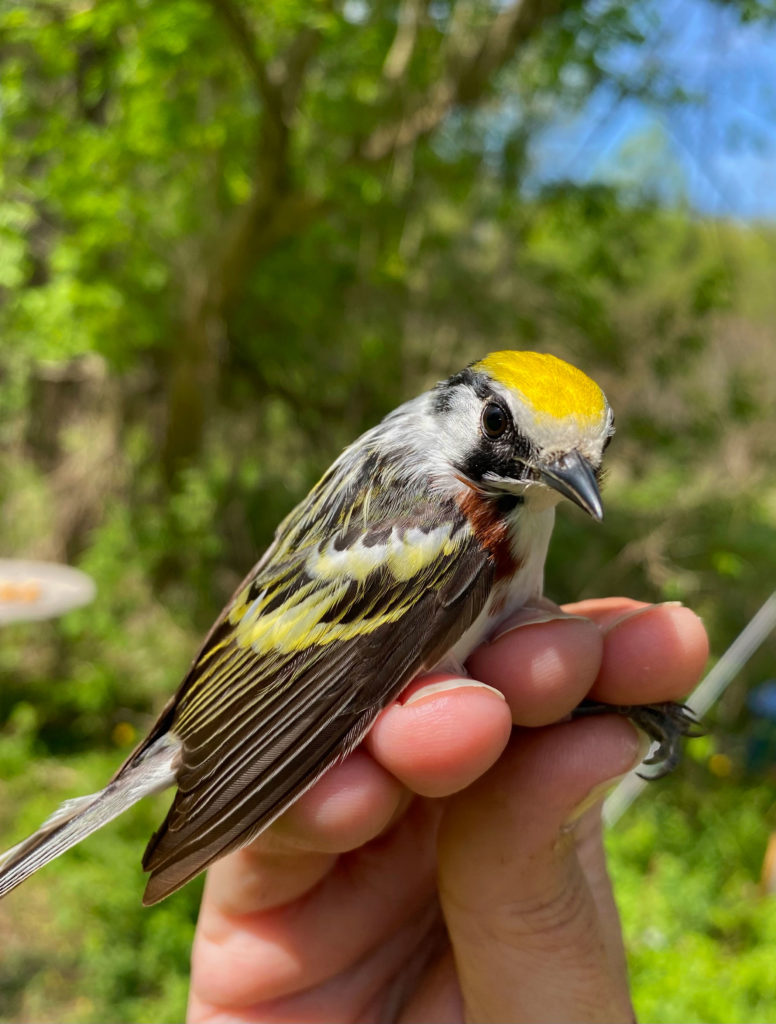
This Chestnut-sided Warbler was a re-capture from a previous year. So cool to think that we banded this bird last spring, he then migrated to Central or South America for the winter, and has now made his way all the way back here and is once again using the Lowville site as migration stopover. It’s just incredible to think about what these tiny birds do each year.
May 20 – Lowville
Today Ben and I were joined by Liam, and we had a fantastic day. It’s what I’d call a ‘late May kind of day’… it’s warm, breeding birds and insects are abundant, we’re getting late-season migrants, and the vegetation is starting to look very lush. The difference in how the site looks today compared to a week ago is quite drastic because of how quickly the trees have leafed out. You can see the comparison in the backgrounds of these photos.
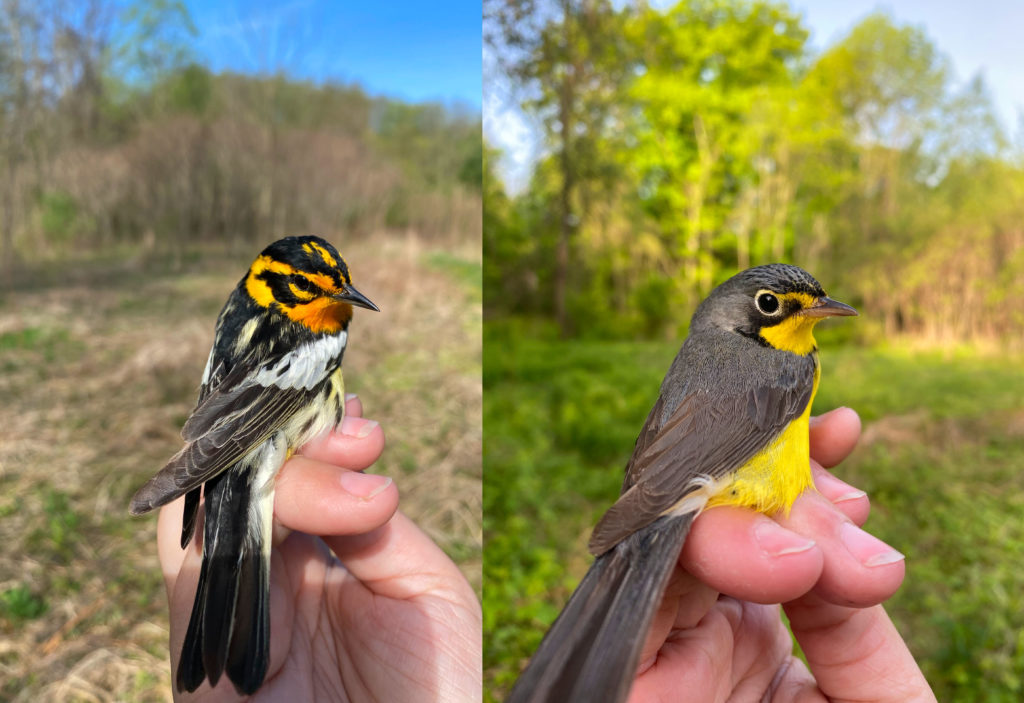
It’s crazy to see how much the vegetation has changed in just one week.. you can compare the photo of the BLBW taken one week prior to the photo of the CAWA from today. I didn’t think to take before/after photos of the site but you can clearly see the change in the background of these bird photos 🙂
We were absolutely thrilled to catch a total of 4 Canada Warblers for the day! While we do typically catch at least a couple of these birds in a season, they are listed as a Species at Risk in Canada, so we are always very pleased to see/catch them. We banded a total of 20 species today and of those we had 9 warbler species. Apparently we also have a good diversity of dragonfly species at the site, and I snapped photos of couple of them. You can see them below (Liam confirmed the IDs on these for me as his insect ID skills are much better than mine).
BANDED:
1 Hairy Woodpecker
2 Red-eyed Vireo
1 Great-crested Flycatcher
3 Traill’s Flycatcher
1 House Wren
1 Swainson’s Thrush
3 Gray Catbird
1 Lincoln’s Sparrow
1 Song Sparrow
3 American Redstart
4 Tennessee Warbler
3 Magnolia Warbler
1 Black-throated Blue Warbler
4 Canada Warbler
1 Blue-winged Warbler
1 Blackpoll Warbler
1 Chestnut-sided Warbler
1 Common Yellowthroat
2 Indigo Bunting
2 Rose-breasted Grosbeak
RECAPS:
1 Red-eyed Vireo
2 Gray Catbird
1 Baltimore Oriole
1 Chestnut-sided Warbler
1 Common Yellowthroat
2 Indigo Bunting
TOTAL: 49 (37 banded, 13 recaps)
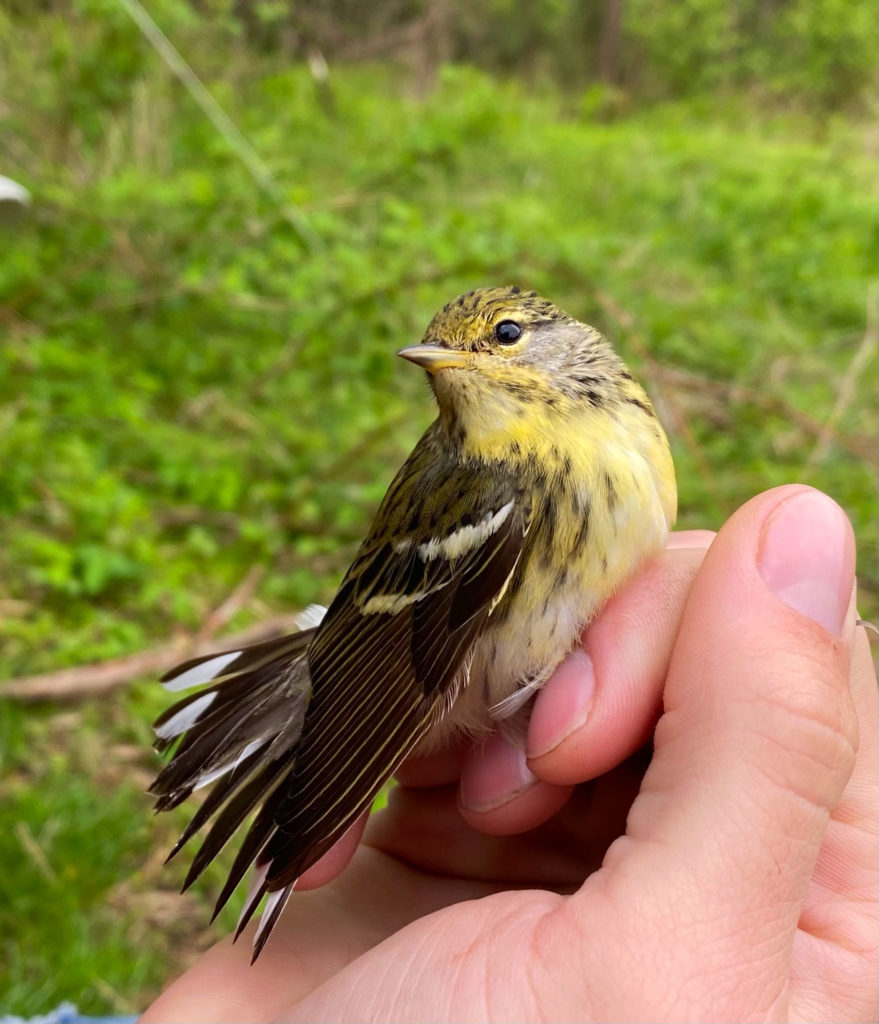
Blackpoll Warbler – this species is well-known to be a late season migrant, so while it is wonderful to catch them, it is also a sign that migration will be coming to an end soon!
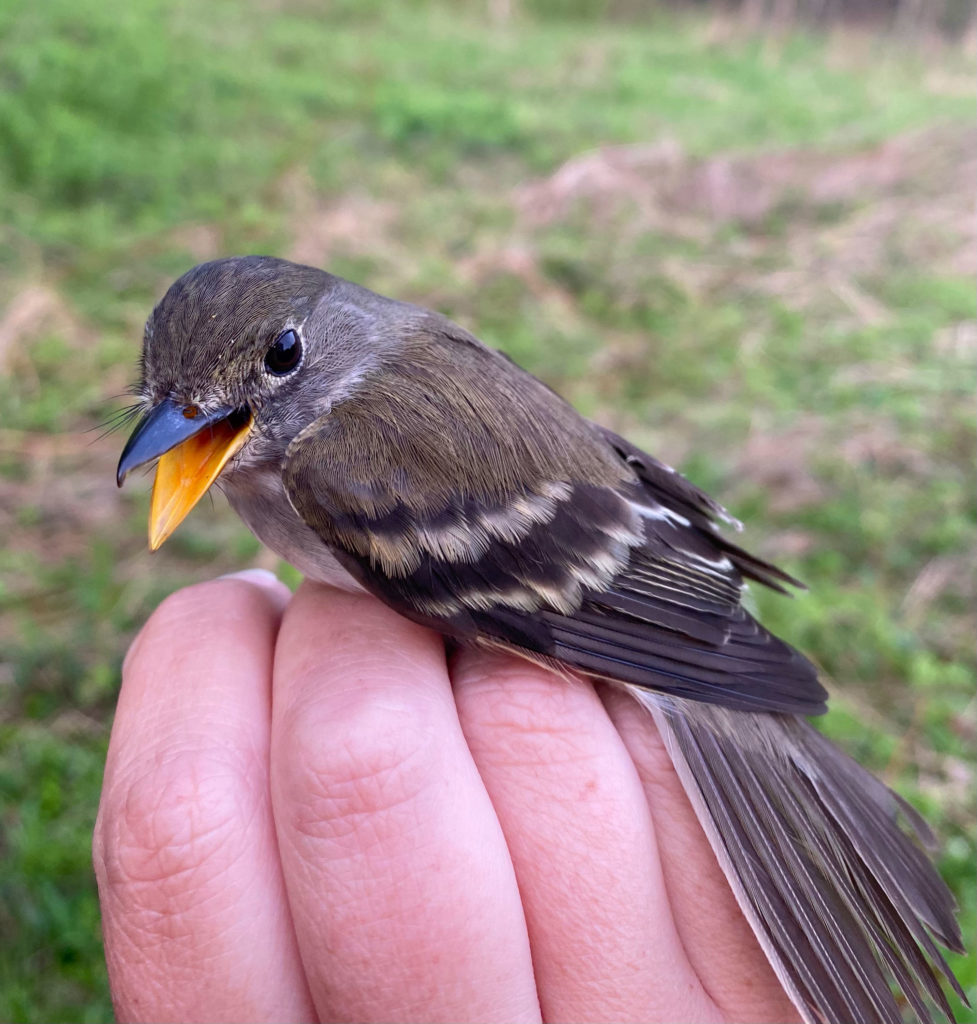
The two flycatcher species, Alder and Willow, are lumped together as Traill’s Flycatcher when caught because they are almost identical and the only reliable way to tell them apart is by their song.
Both dragonflies were successfully released from the nets no worse for wear 🙂
